How to clear a clogged drain in a washing machine?
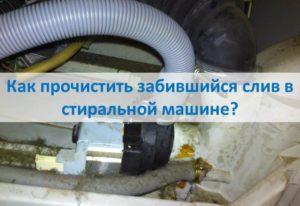 If after the next wash you notice that the water from the tank of your automatic washing machine leaves more slowly than usual, the drain of the washing machine is most likely clogged. This problem occurs quite often, since the elements of the drain system from time to time become clogged with lint, particles of debris, hairs washed from things, and soap deposits accumulate on the parts.
If after the next wash you notice that the water from the tank of your automatic washing machine leaves more slowly than usual, the drain of the washing machine is most likely clogged. This problem occurs quite often, since the elements of the drain system from time to time become clogged with lint, particles of debris, hairs washed from things, and soap deposits accumulate on the parts.
You can deal with the blockage yourself, without resorting to the help of repairmen. To clean the drain system of a washing machine, you need to prepare a special cleaning agent, a sponge, a brush, a polymer cable, and also have a couple of hours of free time.
Let's start by cleaning the garbage filter
The filter element is located on the front of the washing machine, in the lower right corner, behind a special door. To gain access to the garbage filter, you need to pry off the hatch with a flat-head screwdriver and carefully open it. Some models of automatic machines do not have a separate door, but are equipped with a continuous false panel that hides the filtration system. In such a situation, you will have to remove the entire panel by loosening the latches holding it.
What to do after access to the garbage filter is opened? The work algorithm will be as follows:
- Unscrew the screw and remove the filter element from the machine body;
- place an empty container under the opened hole or place unnecessary rags;
- carefully position the unit at an angle, ensuring free flow of water remaining in the system;
- using a cable, clean the system from various types of contaminants;
- Wipe the structure with a damp cloth, simultaneously removing any plaque deposited on the walls.
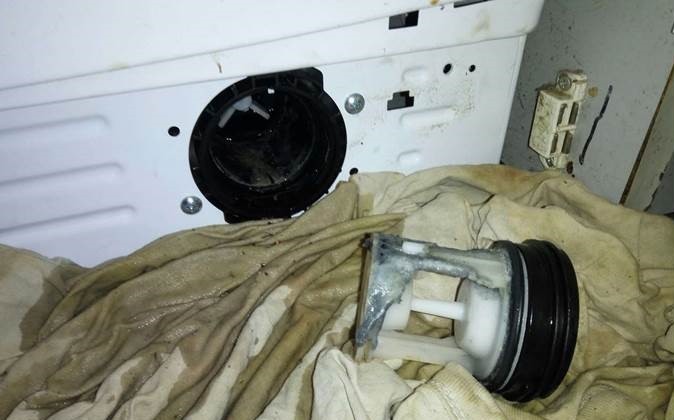
If scale is found on the components of the filter system, the damaged parts will have to be replaced.
After cleaning the filter and structure is completed, secure the element in the housing and install the removed panel in place.
Cleaning the volute, pipe, pump
In addition to the garbage filter, a blockage can also form in the drain pump, as well as the snail connected to it. The free cavities in the listed parts are quite large, so dealing with contamination with your own hands will be a little more difficult than washing the filter. The procedure for cleaning the volute and pipe will be as follows:
- unscrew the bolts holding the volute and disconnect the part;
- loosen the existing clamps;
- unfasten the pipe and clean it of debris;
- rinse the snail, removing all existing contaminants;
- install the components in place, tighten the clamps and tighten the bolts.
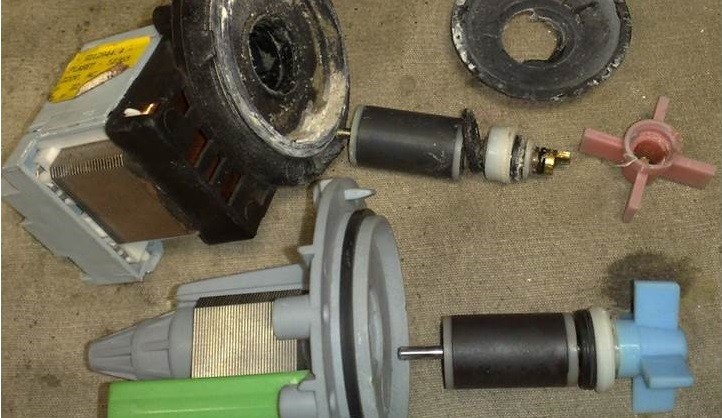
While removing the volute, you can also check the drain pump for blockages. Unfasten the chip with contacts and remove the pump from the washing machine body. Disassemble the pump, remove lint, hairs and other debris that has accumulated in the cavity of the part and around the impeller.
Clogged hose or drain pipe
The drainage of waste liquid can be difficult due to clogging of the cavity of the drain hose or the place where it is attached to the sewer pipe. To clean the washing machine drain, you will have to disconnect the hose from the utility lines and clean it. The following actions must be taken:
- turn off the power to the washing machine;
- close the water intake valve;
- gain access to the garbage filter, remove the element from the housing;
- through the hole that appears, drain the water remaining in the system;
- Using pliers, disconnect the end of the drain hose from the sewer pipe or siphon.
Then you should disconnect the drain hose from the automatic machine. The process will vary slightly depending on the washer model.
- In machines of the Beko, Ariston, Samsung, Kandy, ElG, Indesit brands, access to the drainage hose attachment point can only be obtained through the bottom. The washing machine is laid on its side, after which the drain hose is detached from the pump using pliers.
- In automatic Electrolux and Zanussi washing machines, the drainage tube runs from the back of the body. You can gain access to the mounting location only by removing the back wall. After this, release the latches securing the hose and disconnect the water intake hose from the valve. Then remove the top cover of the machine and release the clamp securing the drainage tube.
- In products from the AEG, Siemens and Bosch brands, you can get to the drain hose by removing the front wall of the unit. To do this, you will have to loosen the clamp holding the hatch cuff, insert the seal into the drum, disconnect the lower false panel, remove the detergent dispenser from the body, unscrew the bolts holding the main control panel, remove the wiring from the UBL and remove the device. After the preparatory steps, you need to remove the front wall and pull out the drain hose from the housing.
The drainage tube is washed with water. At the same time, a brush, a polymer Kevlar cable and detergent compositions are used. To thoroughly clean the hose cavity, it is recommended to add a little citric acid to warm water and rinse the tube with this solution.
Interesting:
Reader comments
- Share your opinion - leave a comment

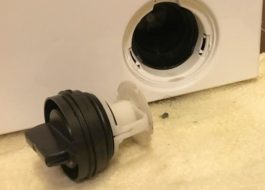
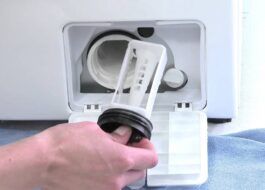
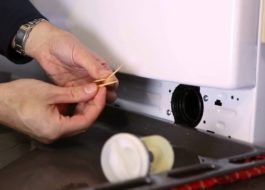

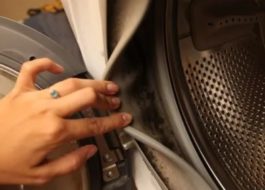















Add a comment